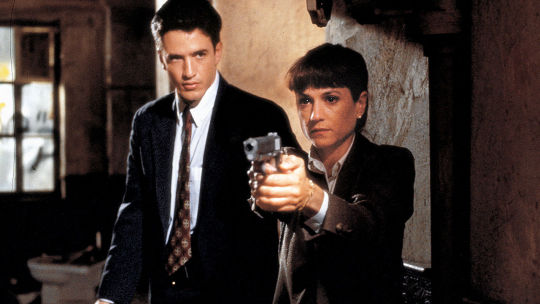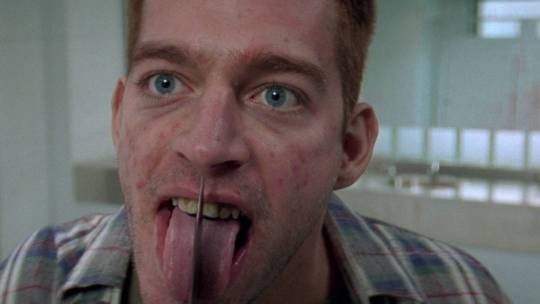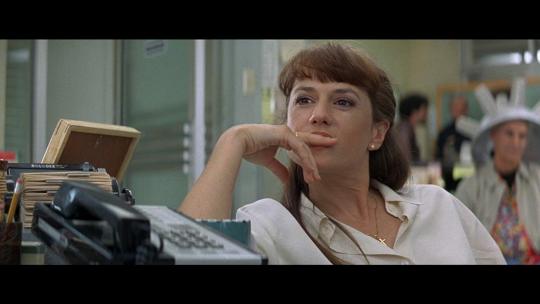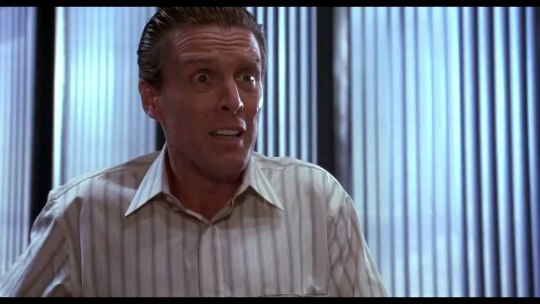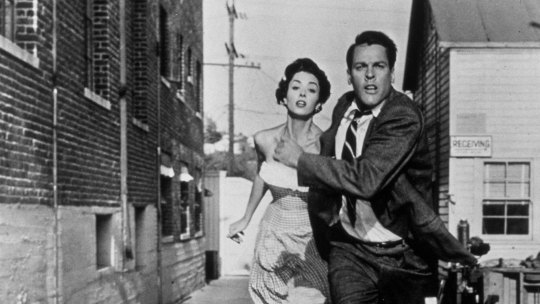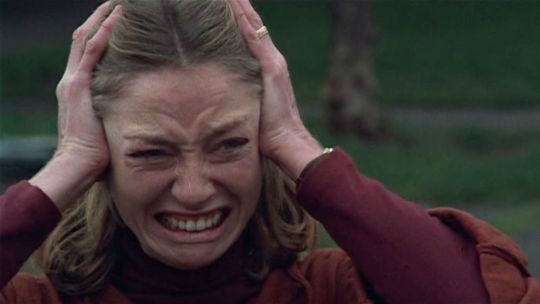If there was ever a horror film that didn’t need a sequel, it would be Joe Dante’s the Howling. It is a film that feels complete, with any ambiguities left by the ending serving to strengthen the overall sense of horror in the film, rather than leaving unanswered questions. It’s also an auteurist work- a perfecting of the mix of satire and horror, a collision of b-movie atmospherics with the mundane and middle-class, from Dante and screenwriter John Sayles’ previous collaboration, Piranha, which the director would bring to all his later films, especially Gremlins and it’s sequel, The ‘Burbs and Matinee.
Despite all this, or perhaps because of it (the Howling was financially successful, generally well-received and has gone on to be considered one of the classic horror films of the 80s) there have been something insane like 7 sequels to the Howling. The only one of the sequels that even attempts to tie into the events of the first film is Part 2, alternately known as “Your Sister is a Werewolf” and the less elegant “Striba- Werewolf Bitch.” The Howling 2 is just awful, despite the presence of Christopher Lee (in new wave sunglasses) and Sybil Danning (also in sunglasses, and fur). Gone is all the humor and charm of the original, gone is the satirical edge, gone is the winning cast and parade of beloved b-movie character actors, gone is any sense of suspense, gone are the ground breaking special effects. If the Howling 2 is remarkable for anything, it’s for being a sequel that entirely abandons almost everything that’s notable and cherished about the film it follows.
The Howling 2’s director, Philippe Mora, returned for the next sequel, Howling 3: The Marsupials, set in his home country, Australia. Perhaps it’s because he was playing on his home turf, perhaps it’s because he was working off his own screenplay, perhaps it’s because a few years had passed and he’d become a better filmmaker (though Mora already had a number of interesting documentaries under his belt, as well as the narrative film Mad Dog Morgan, one of the quintessential Australian films of the 1970s), but the Howling 3, even if it does rise to justifying the need for a Howling sequel in the first place, at least manages to be a considerable improvement over the previous film, and brings back some of the humor and style that made the first film so special.
Part of what works about the Howling 3, but also part of what doesn't work, is that it’s bananas. The action is moved to Australia, and, as the title suggests, the werewolves are marsupials with wolf-like mandibles and kangaroo pouches. As in the original film, they live in an isolated community, but here it’s a backwood in the outback, called Flow (get it?), led by the hulking Thylo (played by Max Fairchild of Mad Dog Morgan and the first two Mad Max movies). The film’s protagonist, Jeroba, escapes the colony for some reason and makes her way to the city, where she more-or-less instantly meets a man who casts her in a low budget movie and also falls in love with her. Also, there’s a government agency and an anthropology professor who have discovered the existence of werewolves and are closing in on them, with the help of a defected Siberian ballet dancer who may or may not also be a werewolf, I can’t totally remember.
All of this is like the first 10 minutes of the movie and you’d think with that much loaded up front, Howling 3 would be able to sustain a narrative, but it manages to peter out like 3/4 of the way through and start going off in a new direction, only to abruptly abandon that and flash forward several years for an ending that ties everything too neatly, somewhat mercilessly turns the up-til-now sympathetic lead characters mean for no particular reason, and ineffectively ape the ending of the original Howling. For a low-budget film, Howling 3 is full of ideas, the problem being that none of them are particularly developed. There’s a whole section that satirizes the production of a low-budget horror movies, but, like, why? Part of it are funny, and Frank Thring (from Ben Hur, King of Kings and Mad Max 3) has what might be the film’s best role as a Hitchcock-inspired b-movie director, but it’s not really clear what the movie is going for here. The original Howling was satirical of the self-help movement and the early days of the “me generation” with its new age health cult turned werewolf colony, but here we’re not really given any meat to chew on, other than the supposed inherent novelty of poking fun at b-movies in a b-movie.
Still, it’s this kind of attempt, however undeveloped, that keeps Howling 3 watchable. Otherwise, it’s hard to put a finger on just what this movie is. Other than the presence of monsters, it’s not really a horror movie, and though there’s humor, it’s not really consistent enough to be a comedy. The government conspiracy angle is undercooked, as is the movie-set satire, and the depiction, later in the film, of the werewolf colony as a kind of off-the-grid utopia doesn’t really go anywhere, nor does the tacked on ending etc. etc. So, yeah, this might be the best Howling sequel by default, and it’s not the worst movie you’ll ever see, but it might have benefited from being realized on its own, without the specter of a much better movie to live up to.











